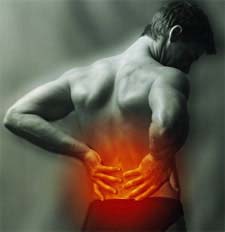 It’s just that the selection of acupoints and penetration of the needles appeared to be unimportant, according to the SPINE (Stimulating Points to Investigate Needling Efficacy) researchers.
It’s just that the selection of acupoints and penetration of the needles appeared to be unimportant, according to the SPINE (Stimulating Points to Investigate Needling Efficacy) researchers.
First, the details.
- 638 adults with chronic mechanical low back pain were randomly assigned to a treatment group.
- Individualized acupuncture
- Standardized acupuncture
- Simulated acupuncture (using a toothpick)
- Usual care
- 10 treatments were given over 7 weeks by experienced acupuncturists.
- Back-related dysfunction (Roland-Morris Disability Questionnaire score; range 0-23) and symptom bothersomeness (0-10 scale) were measured over 1 year.
And, the results.
At 8 weeks
- Dysfunction improved by 4.4 to 4.5 points regardless of the acupuncture protocol, compared with 2.1 points for usual care — a significant difference.
- Real or simulated acupuncture were significantly more likely than usual care to achieve clinically meaningful improvements in dysfunction (60% vs. 39%).
- Symptoms improved by 1.6 to 1.9 points regardless of the acupuncture protocol vs. 0.7 points with usual care — a significant difference.
After 1 year
- Acupuncture groups were significantly more likely than usual care to experience clinically meaningful improvements in dysfunction, but not in symptoms.
The bottom line?
The authors concluded, “Although acupuncture was found effective for chronic low back pain, tailoring needling sites to each patient and penetration of the skin appear to be unimportant in eliciting therapeutic benefits.”
These findings raise questions (again) about acupuncture’s purported mechanisms of action, and whether it’s all just a placebo or nonspecific effect.
Reviewers from the University of Ulster in Northern Ireland believe acupuncture should complement conventional care of low back pain. Their review of the literature lead them to conclude there is…
- Moderate evidence that acupuncture is more effective than no treatment.
- Strong evidence of no difference between acupuncture and sham acupuncture, for short-term pain relief.
- Strong evidence that acupuncture complements conventional treatment for nonspecific low back pain.
However, the techniques employed are diverse even among acupuncturists.
NaturalNews.com provides an explanation for the effectiveness of each acupuncture treatment in the SPINE study. According to this article, “while most forms of acupuncture studied by Western researchers do involve piercing the skin, the ancient healing therapy also includes non-piercing types of acupuncture.”
In fact, the National Center for Complementary and Alternative Medicine (NCCAM), which funded the SPINE study, notes that acupuncture “describes a family of procedures involving the stimulation of anatomical points on the body using a variety of techniques.” And “stimulation” does not necessarily equal “skin piercing.”
Dr. Josephine Briggs, who is director of NCCAM, noted that SPINE “..adds to the growing body of evidence that something meaningful is taking place during acupuncture treatments outside of actual needling.”
Research is needed to determine the mechanisms involved.
5/12/09 18:41 JR